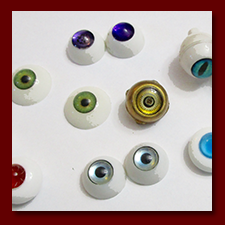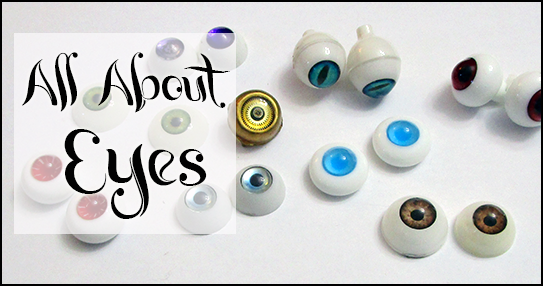I always love the experience of installing a pair of eyes for the first time in a new doll; what was just moments before an insensible figure, somehow has “life” breathed into it for the first time. Different eyes affect the “personality” of each BJD. I often try out a variety of eyes in various materials to see what works best. Sometimes I know just what is needed. Sometimes the one pair that “clicks” is completely unexpected. Because of this, like many collectors, I have built up a collection of eyes of varying sizes, materials, colors and styles over the years.
Many doll companies create their own eyes, but there are a lot of individual artists and eye stores that also sell their own lines. When I purchased my first BJDs in 2004, there were already an assortment of eye types and colors, but as the number of doll artists and companies increased, the choices of eye styles has exploded! Sometimes the purchasing of eyes can seem a daunting and expensive task. To help, here is a rundown on the most common eye types.
Glass:
Glass eyes have been used in dolls and mannequins for centuries. They have a gleam that captures the shine of the real thing. Glass eyes usually come as flat-back or round. Some flat eyes are oval-shaped. Some round eyes are completely round like marbles, but most have a “stem” in the back. My preference is for the latter. The stem can be used to help position eyes in the sockets. The biggest draw-back to stem eyes is the space limitations in the doll’s head. Some simply don’t fit.
Styles of glass eyes range from the realistic to fantasy. The pupils may be black or different colors or the eyes might have no pupil at all. I have several eye sets that have 2-toned irises or sparkly irises, with and without pupils.
The prices for glass eyes range from very inexpensive to pricy. The quality varies as well. There are many lovely glass sets that won’t cost a fortune.
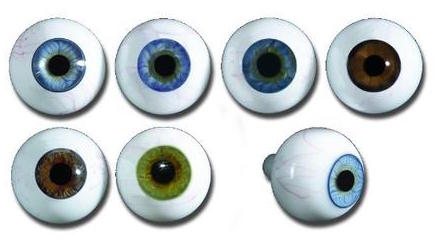
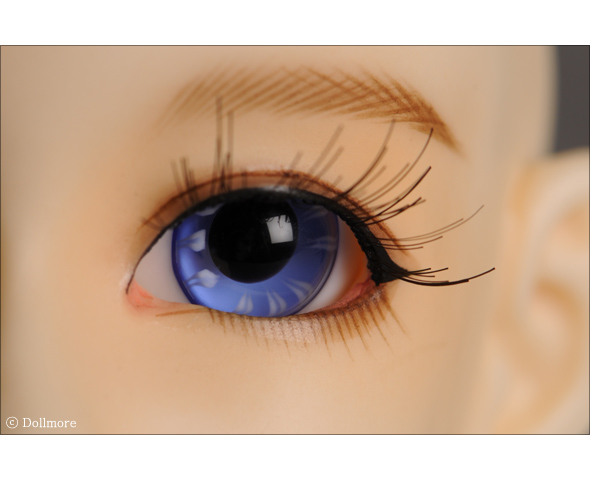


Acrylic:
Acrylic eyes are usually the least expensive type, and there are a huge variety of styles. The iris is usually printed and applied to an eye back and covered with a plastic dome. There are acrylic eyes with a back piece that includes a stem attached to mimic glass eyes, but most of my acrylics are discs that are hollow in back. They are very light. They can be prone to scratches if just thrown in a drawer.
The biggest disadvantage of acrylics to me is that they usually don’t shine ase realistically as glass. For the price though, they are hard to beat.
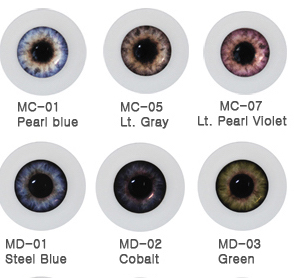
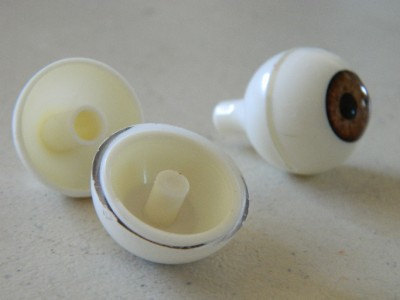
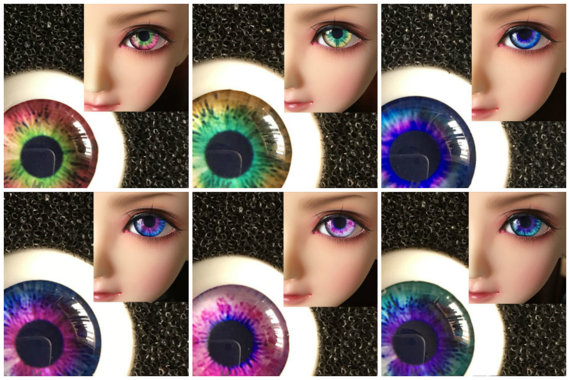
Silicone:
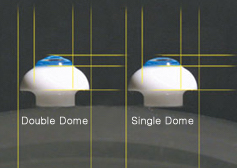
These are often called “soft glass” eyes. They are flexible, and they can look very realistic. These eyes are especially handy if the shape of the eye opening on a doll head has odd space gaps between the eye and the lids when using hard eyes. Silicone will flex to fill the socket tightly and look more natural. The eyes are durable and easy to install. There are less “novelty” styles although they come in a wide variety of colors and pupil shapes. These eyes used to come with a low dome, but now higher dome versions are available too.
The only drawback to soft glass eyes for me is when I use dolls as a subject in photography. I find that the eyes tend to look less moist and shiny in photos.
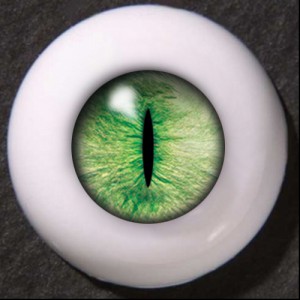
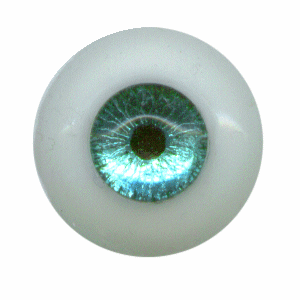
Resin:
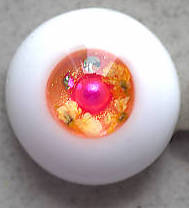
Resin or urethane eyes were less common when I started collecting dolls, but now there are many artists and companies creating these. They have the gleam of glass. Tiny gems, flowers and other things can be imbedded in the resin. These eyes range from very realistic to the sky’s the limit! They are also usually more expensive, but the best resin eyes are some of the most beautiful doll eyes ever!
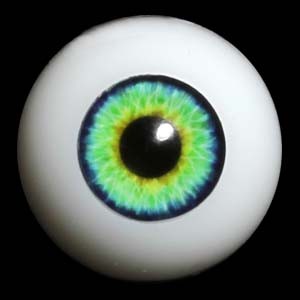
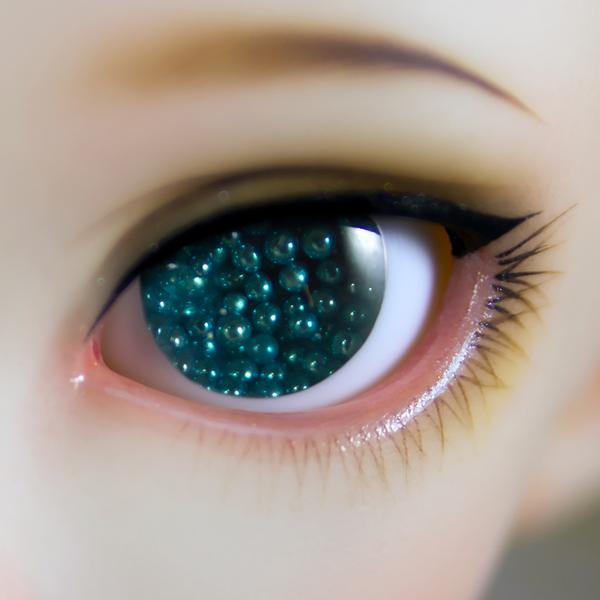
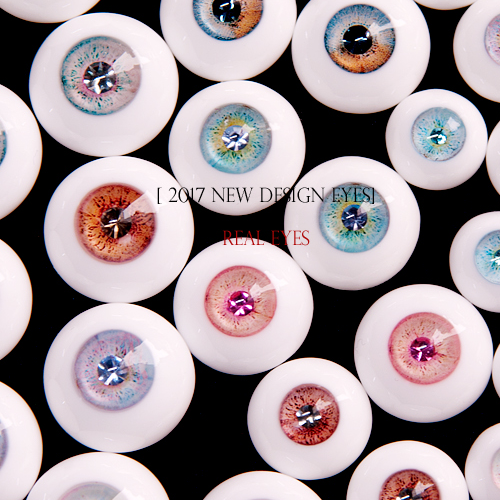
Uncommon materials and make-your-own:
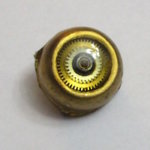
I have seen eyes made with beads, metal, clay and shells. Anything you can fit in an eye socket could be turned into an eye. One of my favorite eyes is a steampunk one created by Creamsoda years ago and sold by Denver Dolls. It’s made of metal and there are tiny gears inside imbedded in resin.
There are also kits to help you make custom eyes. Acrylic eye kits have been around a long time. They include an eye-back and clear dome. The eye can be painted or the design can be created on paper and cut out and placed in the space provided. Resin eye-backs are also available, and directions for making resin eyes can be found easily on Youtube.
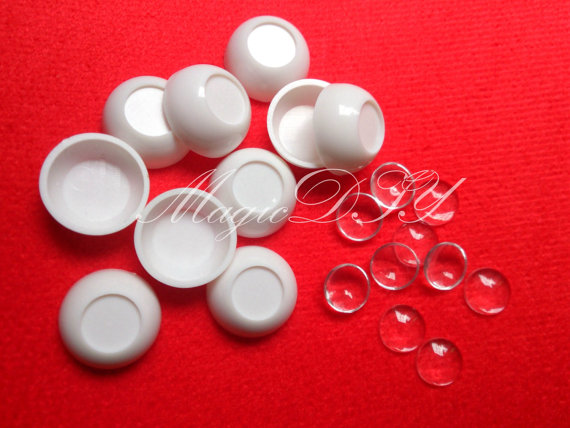
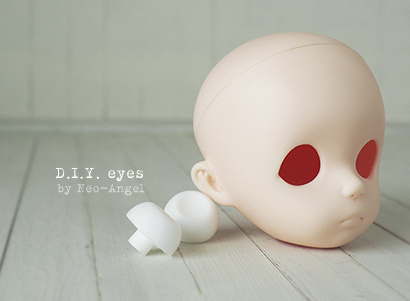
If you have a specific idea for an eye design for a project, there are many eye-artists that will make custom eyes, or you could also consider making them yourself. That is what makes BJDs a such a fun hobby, you can collect the elements from different sources (body, head, eyes, clothes, wig, shoes) or do most of the work yourself, or some combination of the two. Then you can take the same doll and re-make it all over again.
Companies represented above:

